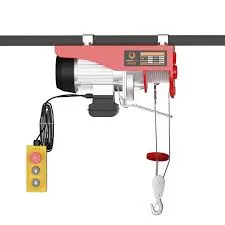


Understanding Warehouse Pallet Trucks The Unsung Heroes of Material Handling
In the bustling world of logistics and warehousing, efficiency and speed are paramount. Among the many tools that facilitate a smooth operation, pallet trucks, also known as pallet jacks, stand out as essential equipment for maximizing productivity in warehouse settings. While often overlooked, these versatile machines play a crucial role in the handling and transportation of goods, making them the unsung heroes of material handling.
The Basics of Pallet Trucks
A pallet truck is a type of material handling equipment designed to lift and move pallets. It typically consists of two forks that slide underneath a pallet and a hydraulic lifting mechanism that allows the operator to raise and lower the load. Pallet trucks come in various types, including manual, electric, and powered pallet jacks, each tailored to different operational needs. Manual pallet trucks require human effort to pump the hydraulic system, while electric models are equipped with motors for easier lifting and movement.
Advantages of Using Pallet Trucks
1. Efficiency in Operation Pallet trucks significantly enhance operational efficiency. They simplify the process of moving heavy goods short distances, eliminating the need for manual lifting and reducing the physical strain on workers. This efficiency translates to quicker loading and unloading processes, ultimately boosting overall productivity in the warehouse.
2. Versatility Pallet trucks are versatile and can be used in various environments, from large distribution centers to smaller retail operations. They can handle a wide range of pallet sizes and load weights, making them suitable for diverse industries, including food and beverage, pharmaceuticals, and manufacturing.
3. Cost-Effectiveness Compared to more complex material handling equipment like forklifts, pallet trucks are relatively inexpensive to purchase and maintain. This cost-effectiveness makes them an ideal choice for businesses looking to optimize their warehouse operations without significant capital investment.
4. Safety Using pallet trucks reduces the risk of injury associated with manual lifting. They allow workers to move heavy loads with ease and minimal exertion. Additionally, many modern pallet trucks come equipped with safety features such as automatic braking systems and ergonomic handles, further enhancing workplace safety.

Choosing the Right Pallet Truck
Selecting the right pallet truck is crucial for maximizing productivity in a warehouse. Here are some factors to consider
- Load Capacity Assess the weight of the loads you will be moving. Different pallet trucks have varying weight capacities, so it is essential to choose a model that can safely handle your heaviest pallets.
- Fork Length The length of the forks should match the size of the pallets being used. Standard pallets typically require forks that are 48 inches long, but other sizes may be necessary for different pallet dimensions.
- Wheels and Maneuverability Consider the floor surface and layout of your warehouse. Pallet trucks equipped with large, durable wheels are better suited for rough or uneven surfaces, while smaller wheels are ideal for smooth floors.
- Power Source Decide between manual and electric pallet trucks based on your operational needs. Manual pallet trucks are suitable for lighter loads and shorter distances, while electric models are ideal for heavier loads and longer hauls.
Conclusion
In conclusion, warehouse pallet trucks are vital assets in the world of material handling. Their efficiency, versatility, cost-effectiveness, and safety features make them invaluable tools for any warehouse operation. By investing in the right type of pallet truck, businesses can streamline their processes, enhance worker safety, and ultimately drive success in their logistics and warehousing endeavors. As the backbone of material handling, pallet trucks deserve recognition for their essential role in keeping the wheels of commerce turning smoothly.



